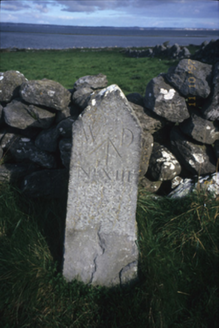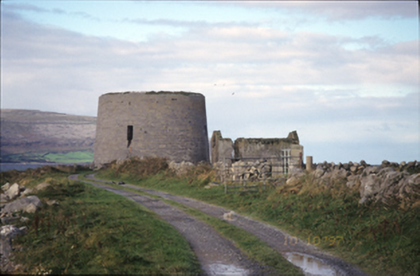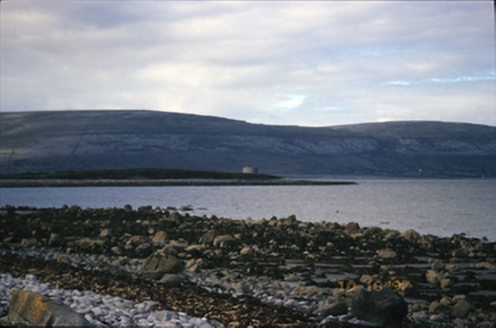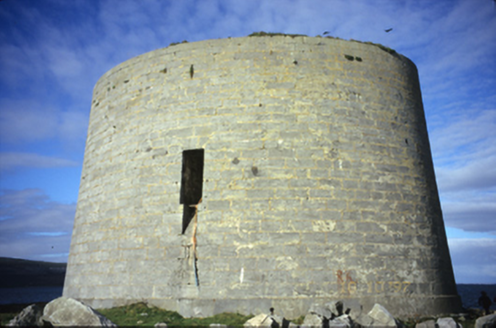Survey Data
Reg No
20400205
Rating
National
Categories of Special Interest
Architectural, Social, Technical
Previous Name
Finavarra Battery
Original Use
Martello tower
Date
1805 - 1815
Coordinates
124071, 211600
Date Recorded
10/10/1997
Date Updated
--/--/--
Description
Freestanding single-bay two-stage over shallow basement Martello tower, built 1810-2, on an ovoid plan. Decommissioned, 1863. Disused, 1997. Limestone flagged roof behind parapet. Repointed margined tooled limestone ashlar battered walls on dragged cut-limestone chamfered plinth with margined tooled cut-limestone coping to parapet. Square-headed openings with limestone ashlar voussoirs. Square-headed machicolated door opening (south-east) with limestone ashlar voussoirs. Set in field with dry stone boundary wall to perimeter having rubble stone coping. NOTE: Finavarra Point Martello Tower and Aughinish Point Martello Tower (see 20400351) were erected to defend and protect the south flank of Galway Bay and, unlike their contemporaries on the east coast of Ireland, display ovoid plans and mountings for three cannons on trefoil-plan platforms which, from the air, resemble shamrocks. Finavarra Point Martello Tower and Aughinish Point Martello Tower were 'dismantled…the guns, stores, and artillerymen withdrawn…the buildings taken possession of by the Barrack Department' when, following an inspection, 'it was found [the] towers were manned, armed, and kept in a state of repair at great expense to the public [despite being] quite incapable of rendering the slightest service, either offensive or defensive' (The Queensland Times 28th November 1863, 3). A collection of freestanding War Department boundary stones are inscribed "WD/↑/No XV", "WD/↑/No XVI" and "WD/↑/No XIX". A further War Department boundary stone inscribed "WD/↑/No XVIII" is no longer in its original position and is lying on its side on the foreshore. Four additional War Department boundary stones inscribed "WD/↑/No VIII", "WD/↑/No XI", "WD/↑/No XIII" and "WD/↑/No XIV" were repurposed in a Folk Art-like roadside monument (1999); the provenance of a fifth stone inscribed "WD/↑/No 17" is unknown (pers. comms. Eamon Lynch).







